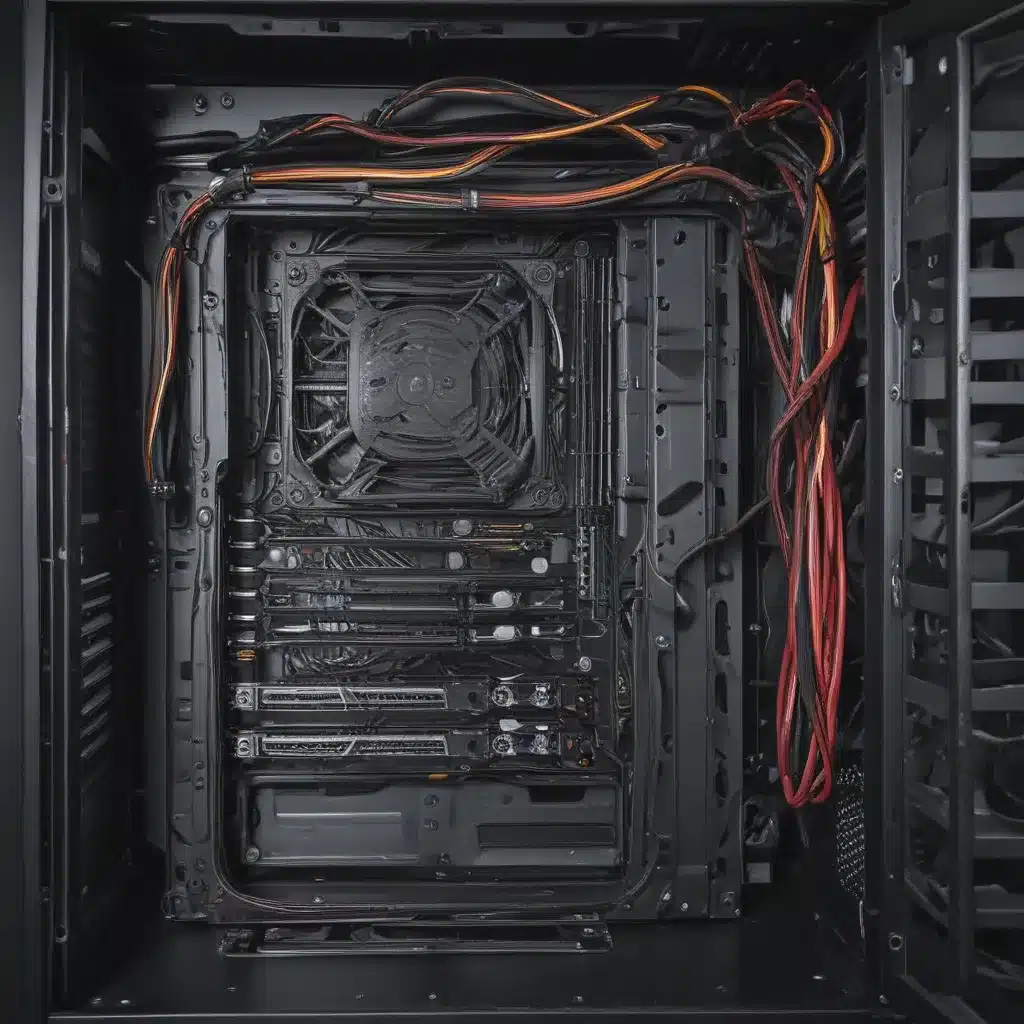
Keep Your Cool: A Computer Repair Technician’s Guide to Beating the Heat
As a computer repair technician, I’ve seen my fair share of overheated PCs. You know the drill – the fans are whirring like mad, the case is hotter than a blazing summer day, and the poor machine is struggling to keep up with even the most basic tasks. It’s a common problem, but one that’s often easy to fix with a bit of know-how.
In this in-depth guide, I’m going to share my top tips and tricks for maintaining optimal operating temperatures inside your PC case. Whether you’re a seasoned PC enthusiast or a complete novice, you’ll walk away with a better understanding of how to keep your rig cool, calm, and collected – no matter what kind of workload you’re throwing at it.
Understanding Optimal Operating Temperatures
Let’s start with the basics – what exactly are the optimal operating temperatures for your PC components? Well, it depends on the specific hardware you’ve got under the hood, but as a general rule of thumb, you’ll want to keep your CPU, GPU, and other critical components below the following temperatures:
| Component | Optimal Temperature Range |
|---|---|
| CPU | 60-80°C (140-176°F) |
| GPU | 70-85°C (158-185°F) |
| Hard Drive | 30-50°C (86-122°F) |
| SSD | 0-70°C (32-158°F) |
Now, it’s worth noting that these are just general guidelines. Your individual components may have slightly different temperature thresholds, so be sure to check the manufacturer’s recommendations. And of course, the higher the load on your system, the hotter your components will run.
Airflow: The Key to Keeping Your PC Cool
One of the most important factors in maintaining optimal operating temperatures is ensuring that your PC case has good airflow. Think of it like this – your computer is like a tiny little furnace, generating heat as it works. If that heat can’t effectively dissipate, it’s going to start building up inside the case, leading to overheating.
That’s where proper airflow comes in. By strategically placing fans and ensuring unobstructed air paths, you can create a steady stream of cool air flowing through your PC, whisking away the hot air and keeping your components nice and frosty.
According to Quora, the ideal fan configuration is to have at least one intake fan at the front of the case, and one or more exhaust fans at the back and/or top. This creates a positive pressure system, where the cool air is constantly being pushed in and the hot air is being efficiently expelled.
And don’t forget about cable management! Messy, tangled cords can severely disrupt airflow, so be sure to keep everything neat and tidy inside your case. Trust me, your components will thank you.
Cooling Solutions for Specific Components
Now that we’ve covered the basics of airflow, let’s dive a little deeper into cooling solutions for some of your PC’s most important (and heat-generating) components.
Keeping Your CPU Cool
The CPU is often the hottest component in a PC, so it’s crucial to make sure it’s properly cooled. Most modern CPUs come with a stock heatsink and fan, which can be perfectly adequate for light to moderate use. But if you’re running more demanding applications or overclocking, you may want to consider upgrading to a high-performance CPU cooler.
According to Quora, your CPU should ideally be running between 60-80°C (140-176°F) under load. Anything higher than that, and you’re starting to venture into the danger zone.
Maintaining GPU Temperatures
Your graphics card is another major heat producer, especially when you’re gaming or running resource-intensive tasks. Just like the CPU, most GPUs come with a stock cooler, but you may want to consider a more robust cooling solution if you’re seeing temperatures consistently above 80°C (176°F).
One option is to install additional case fans to improve airflow around the GPU. You can also look into aftermarket GPU coolers, which can offer significantly better cooling performance than the stock solution.
Cooling Your Storage Drives
While not as power-hungry as the CPU and GPU, your storage drives (both HDDs and SSDs) can still generate a fair bit of heat, especially if they’re under heavy use.
According to the WD Community forum, it’s generally recommended to provide some form of cooling for internal hard drives, even when used in an external enclosure. This helps maintain optimal operating temperatures and can prolong the lifespan of the drive.
For HDDs, you can consider installing a dedicated hard drive cooling fan or using an external enclosure with built-in cooling features. For SSDs, passive cooling solutions like heatsinks can be effective in keeping temperatures within the recommended range.
Putting It All Together
Now that you’ve got a better understanding of optimal operating temperatures and the importance of proper cooling, it’s time to put it all into practice. Remember, maintaining a cool PC is all about balancing airflow, component-specific cooling solutions, and a bit of good old-fashioned cable management.
And if you ever find yourself in a pinch and need professional help, don’t forget that the team at IT FIX is always here to lend a hand. We’ve got the expertise and the tools to keep your rig running at its best, no matter how hot things get under the hood.
So what are you waiting for? Let’s get your PC chilled out and ready to tackle whatever you throw at it!












